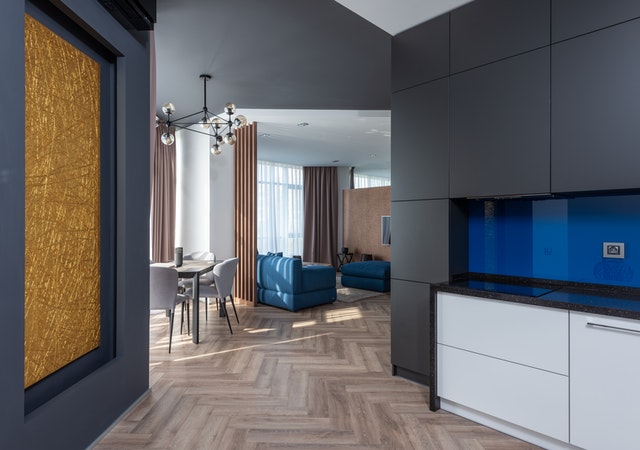Granite Countertop Colors and Selection Process
Granite counters are a popular component of many kitchen designs. Selecting the suitable granite for countertops can help to set the stage for the rest of the invention.
The kitchen counter is a frequently utilized space. It acts as a landing area, a cutting surface, and a table and receives hot pans and food straight from the freezer. It is, therefore, no wonder that granite, with its incredible strength, durability, and ability to withstand this type of abuse, combined with its natural beauty, is such a popular surface for use in kitchen design.
With its many colors and design elements, selecting the granite countertop before other materials in the kitchen design makes the most sense. It provides homeowners with a built-in pallet and style from which to work. Since granite is a natural material and therefore prone to variation, the selection process of a granite counter may seem challenging at first. Still, this process smoothes the way for the remainder of the kitchen design when appropriately completed.
Visiting the Stone Yard
Because granite has so much natural variation from piece to piece, and even within one piece, homeowners are encouraged to select the exact part of granite they would like to use for the kitchen counter. It means taking a trip to the stone yard where the granite slabs reside.
Visiting a stone yard is quite an experience for a first-time visitor and may seem overwhelming at first. Therefore, it helps to know what to expect and have some idea of what type of stone is desired.
Many stone yards will have a small showroom attached, with pieces of granite ranging in size from 6” x 12” to 12” x 36” for customers to view. These pieces of stone are there to give an idea of what a slab will look like, only, and are in no way what a homeowner should expect to receive. They help a homeowner narrow down their choices and get an impression of the vast quantity of stone available in that yard, but little else. Use them to get a sense of tone and movement for the rock and give the stone technicians an idea of what is desired to make recommendations.
Making Preliminary Choices
Going into the stone yard, homeowners should have a feel for what they are looking for in the creation of the kitchen design. It will help make choosing the granite slab for them from the hundreds of stones available a more straightforward process. For example, if creating a Tuscan kitchen, warm tones will be desired, so it helps to look at stones such as Madurai Gold, Giallo Fiorito, or Giallo Ornamental.
Once the color has been narrowed down, the movement of the granite should be considered. Some stones have a great deal of veining and movement, while others have a more closely packed surface. If a modern kitchen is being created, look for stones with great movement, which slab-style cabinets can compliment. On the other hand, a more traditional kitchen will work better with a more tightly patterned stone.
So if a homeowner knows ahead of time that they are creating a modern, Italian-styled kitchen, then the stone technician may be able to direct them to samples of stones such as Carpe Diem or Delicatus. If the homeowner prefers a darker, traditional-styled kitchen is desired, then stones such as Baltic Brown or Leopard Skin may be the right choice.
Viewing the Slabs
Once the stones have been narrowed down to two or three choices, the technician will have the large slabs of these stones brought out for viewing. The slabs will be brought out one at a time on a crane and held up for the homeowner to see. Examine the stone closely. Check for fissures or cracks in the stone, some only visible from behind, that could lead to weakness down the road.
Observe the colors and movement, checking for significant out-of-the-ordinary marks in the stone. These are not defects and can enhance the look of a kitchen but may not be desirable for all homeowners. If a stone does have such a mark but is otherwise hot, ask the stone technician if that piece could be used for the sink or stove cutout, thereby eliminating it.
If planning a kitchen with two tones, or two granites, then be sure to see both slabs near one another to be sure that they coordinate. Then, after choosing the stone or stones, and before leaving the stone yard, ask the technician to knock a small piece off the corner of the selected stone to bring to the cabinet and tile showrooms to help make the rest of the design process simpler.
The granite selection process is lengthy, but once completed, many homeowners find that the rest of their decisions fall into place quickly. For example, the stone gives a built-in color pallet for wall color, tile floors, and backsplashes, and the movement of the stone help to dictate how much detail the cabinetry and backsplash should have. So focus on the granite selection process, and be sure that the kitchen design pulls together seamlessly, creating the kitchen design that has always been desired.




